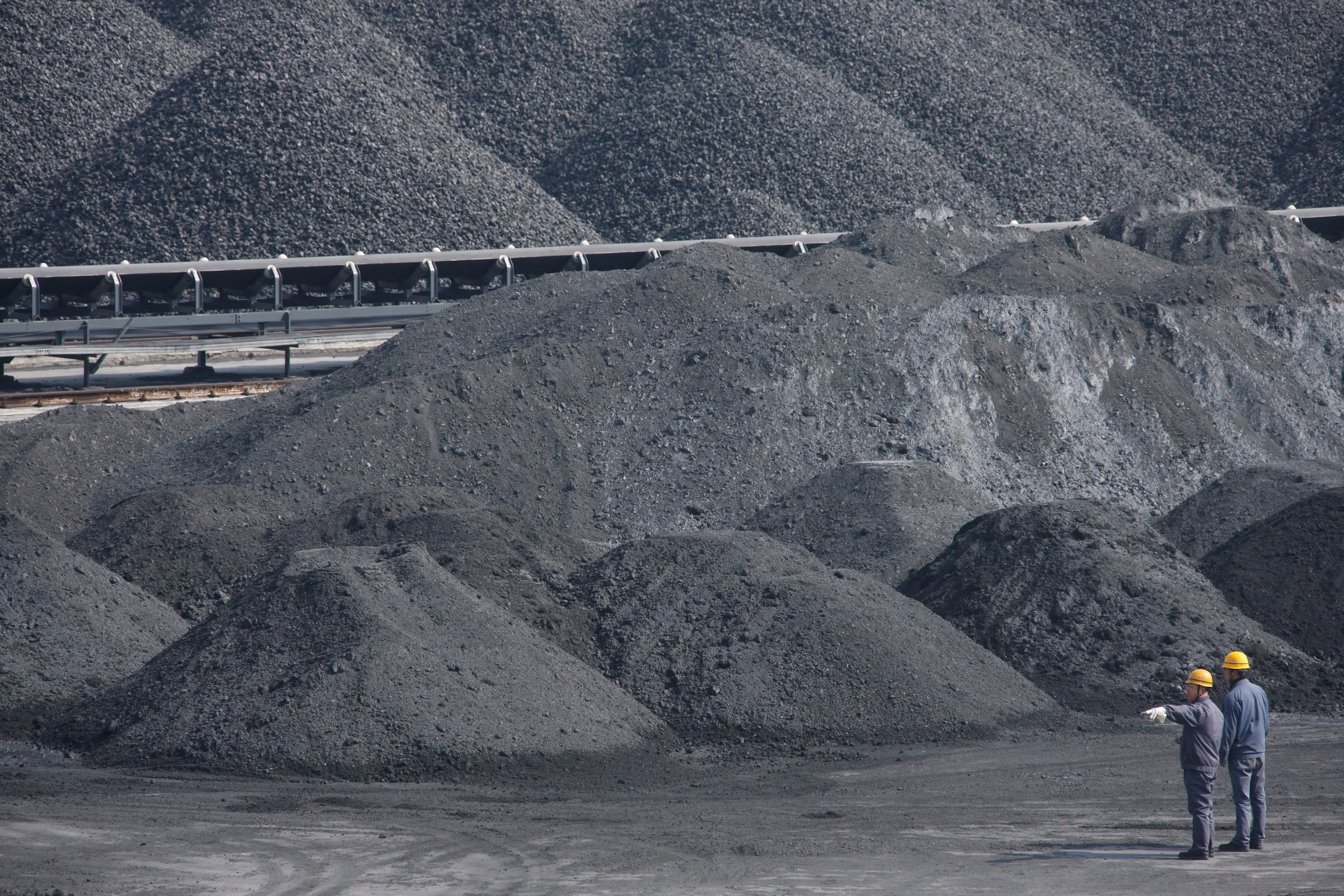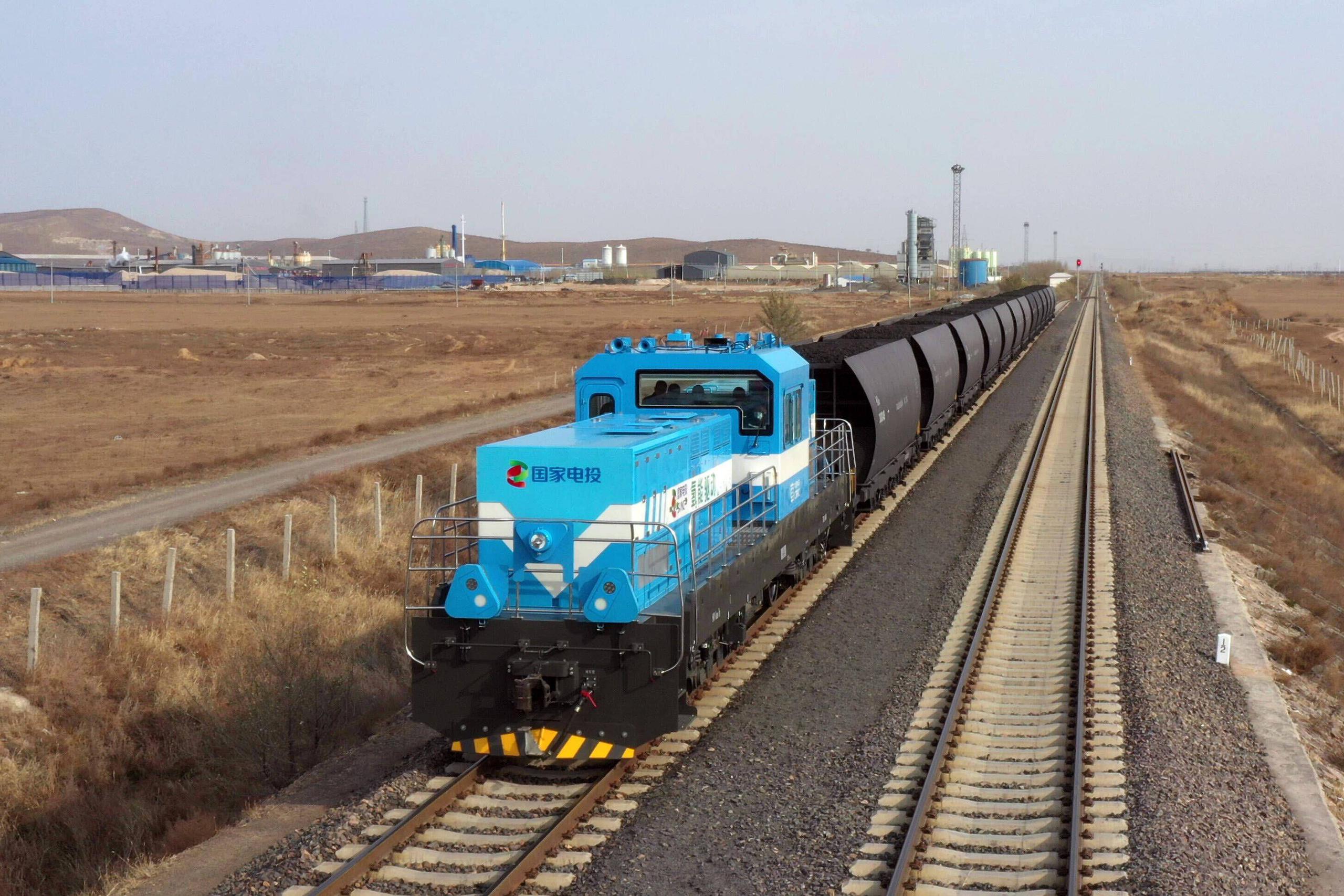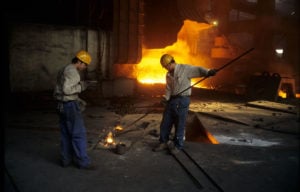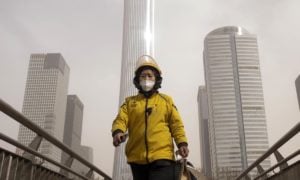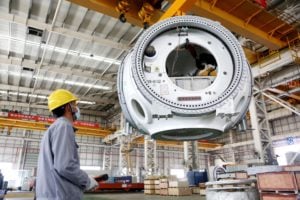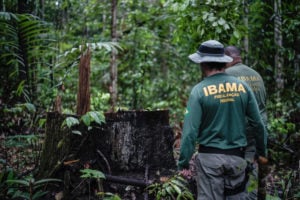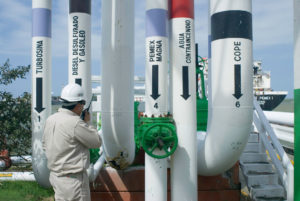In September 2020, China declared its intention to peak its carbon emissions by 2030 and reach carbon neutrality by 2060 – the “dual carbon” goals. Key to hitting these targets is transforming the iron and steel sector, which emits the most carbon of China’s manufacturing sectors – and approximately 15% of national carbon emissions.
Iron and steel are also behind about 20% of China’s entire coal consumption, which is partially due to coking. Coke is produced by baking coal until it becomes carbon. When consumed, coke generates intense heat but little smoke, making it ideal for smelting iron and steel. As such, Chinese industrial policy usually brackets coking with steel.
Shanxi, in north-central China, is the country’s top coke-producing province and fifth largest steel producer. In 2020, the coking industry accounted for 8.2% of Shanxi’s carbon emissions and 35.6% of its coal use. This makes Shanxi a microcosm of the challenges that high-carbon industries face in becoming low-carbon.
These challenges are more than simply a matter of technology – the low-carbon transition demands economic and industrial restructuring. As such, Shanxi’s efforts to drive decarbonisation, while sustaining areas economically reliant on coking and steelmaking, make it a representative case study for the industry.
Policies for a steady transformation
Long-process steelmaking predominates in China, accounting for 90% of output. Globally, this coal-intensive process accounts for 73% of output. According to a 2021 Rocky Mountain Institute report, only around 30% of US steel is made this way. Europe also predominantly employs short-process steelmaking, which is less coal-intensive. China’s steel-generated CO2 emissions are therefore far higher.
The long and the short of steelmaking
| Long process | Short process | |
| Raw materials | Iron ore, raw coal | Scrap steel, molten iron |
| Major equipment | Blast furnaces, converter | Electric arc furnaces |
| Energy source | Coal | Electricity |
| CO2 emitted per tonne of steel | Two tonnes | 0.6 tonnes |
The coking industry has an inbuilt advantage in Shanxi because the province is also a major coal producer. As such, long-process steel accounts for more than 95% of its output. Shanxi’s coal output exceeded 1.3 billion tonnes in 2022 and this capacity is expanding. Shanxi is also China’s leading coke producer and domestic supplier, with an output of nearly 98 million tonnes in 2022 – 20.7% of the national total.
Chinese steel is still expanding and consumes more coke than any other sector in the country. As such, the industry’s emissions continue to rise.
At the policy level, Shanxi is steadily bolstering its low-carbon agenda in line with the national dual-carbon goals. The province’s 14th Five-Year Plan (2021-25), for example, emphasises “strengthening, optimising and greening the traditional 100-billion-yuan [US$13.9 billion] industries of coking and steel.”
A provincial action plan for transforming and upgrading the most polluting elements of Shanxi’s steel industry, presented in 2022, pledged investment worth 76.1 billion yuan (US$10.6 billion). Four months later, the provincial government issued its opinions regarding the “high-quality development of the coking industry”; the document includes the goal of pushing both the industry’s total energy consumption and energy intensity (the amount of energy required to produce a unit of coke) into decline by 2025, compared to 2020 figures. By late 2023, coking furnaces under 4.3 metres in height had been phased out in Shanxi, as taller furnaces are more energy-efficient and less polluting.
In addition, Shanxi released its own carbon-peaking action plan in early 2023. Its strategy is to optimise or replace relevant assets and enhance the province’s capacity for resource security. Measures include encouraging coproduction in steelmaking and coking, which repurposes by-product gasses (such as carbon monoxide and hydrogen) to minimise pollution and increase steelmaking efficiency; it also covers the exploration of hydrogen metallurgy, which replaces coke with hydrogen to reduce CO2 emissions.
Shanxi has in fact been exploring the potentials of hydrogen since 2019. The gas that is produced while baking coal to make coke is rich in hydrogen, which means high-purity hydrogen can be sourced from within the coking industry. It is important to note, however, that this counts as “grey hydrogen”, rather than the green hydrogen favoured internationally.
As I often stress, transitional development needs to advance one step at a time – having some progress is better than none. These industries need to be allowed to transition, step by step, from grey to blue to green hydrogen. If they are required to be green from the outset, the associated costs and capacity limitations would render the transition impossible.
Demand for hydrogen is increasing because it does not produce greenhouse gases when burned.
⚪️ However, fossil fuels are typically used to produce the hydrogen in the first place. This is known as “grey” hydrogen.
🔵 “Blue” hydrogen is also produced using fossil fuels but alongside carbon capture and storage technology, which stops the resulting greenhouse gas emissions from reaching the atmosphere.
🟢 Hydrogen can only be classified as “green” if it was produced entirely using renewable energy.
On this basis, in 2022 the province released its “Medium- and long-term plan for the Shanxi hydrogen energy industry”. It sets out Shanxi’s intention to become a national supply base for hydrogen energy by 2035. Over that time, space for transformation could be realised in several areas.
Industry explorations: Combining coal, coke, hydrogen and iron
Aside from Taiyuan Iron and Steel in the middle of the province, Shanxi’s main steel firms are in the southern cities of Changzhi, Linfen and Yuncheng. All three are located on the Fenwei Plain, where air circulation is poor and atmospheric pollution clusters during autumn and winter – firms in the area must often halt operations due to high pollution. The local economy is dominated by coal-related heavy industry. What is therefore needed is a balanced transition that considers the environment and the economy.
The usual approaches to decarbonising steel focus on energy-efficiency improvements and deploying low-carbon technologies in the production process. But other approaches eliminate carbon altogether. “De-coaling at source”, for example, refers to the use of renewable energy to electrify hydrogen-based production methods that don’t require coke.
Jinnan Steel, the largest private steel firm in the Linfen area, has effectively transformed into a joint operator spanning coal, coke, hydrogen and iron, and has come up with some promising approaches in the process. Jinnan’s main initiative involves separating and purifying hydrogen in coking plants. This can then be used as a raw material for chemical products.
Jinnan’s purified hydrogen can also be used to fulfil various energy demands. One such use is hydrogen metallurgy, which in Jinnan’s case is hydrogen-rich blast-furnace injection. This method for heating a blast furnace uses hydrogen-rich gas rather than coke, thereby reducing carbon emissions. Jinnan calculates that, per year, this method could reduce its coke consumption by 77,000 tonnes and CO2 emissions by 240,000 tonnes.
Another use for hydrogen involves setting up zero-carbon, closed-loop logistics platforms in industrial zones: inhouse fleets of hydrogen-fuelled heavy trucks using a hydrogen refuelling network. Jinnan Steel now operates more than 300 such trucks, which currently run on blue hydrogen. The company says this fuel costs it less than diesel would.
As Jinnan plans out its transition from grey to green hydrogen energy, it has also embarked upon the next phase of its solar energy push. This includes the single largest photovoltaic (PV) power generation project approved in Shanxi – a 1.3 gigawatt (GW) “new energy and energy storage” project. Its first phase is a 0.3 GW installation that went live in January 2023.
Transition takes time
China’s steel output has exceeded one billion tonnes in each of the past three years, although overall output dipped in 2021 and 2022. In support of the national dual-carbon goals, the industry is planning for overall production to come down by 8.1% in 2030 and by a further 38.3% in 2050, against the 2020 and (projected) 2030 figures respectively.
One impediment to these aims is the relatively young age of China’s steelmaking blast furnaces. The average age of the country’s fleet is 13 years, but the typical operational lifetime of such furnaces is more than triple that. Forcefully imposing a transition would risk the widespread stranding of these assets.
Technological transition itself may be tricky but achieving it while maintaining socio-economic stability and simultaneously creating favourable developmental conditions on the ground is a hugely complex balancing act.
The steel and coking industries have been handling increasingly stringent environmental requirements for a while – they were already working to reduce air pollution and carbon emissions before the dual-carbon goals were announced. Multiple large-scale, low-carbon initiatives have since been rolled out but, the energy transition cannot happen overnight and it is not a revolution.
In a classic resource-based region like Shanxi, purified hydrogen can help to balance transitional and economic priorities. It must be emphasised, however, that the time and space required for such developments are necessary in areas where the pressure for energy transition is greatest. If that capacity is found, it can facilitate further efforts towards a carbon-neutral world.

